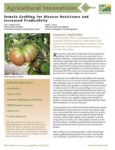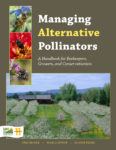Showing 101-110 of 133 results
This 20-minute video, produced by the University of Vermont Extension, features farmer Mike Collins taking viewers through each step of the tomato grafting process. Grafting can be an effective way of battling soil-borne diseases in hoop house or high tunnel vegetable production systems.
Order an entire set of SARE Outreach books and bulletins for one low price.
Roger Rainville is ahead of the curve when it comes to reducing costs on his farm near Alburgh, Vt. He’s currently producing biodiesel from canola and sunflower for about $1.70 a gallon.
Small ruminants (sheep and goats) are adaptable to many different production systems and can be raised with relatively few inputs, but they face huge production challenges. Control of internal parasites, especially gastrointestinal nematodes including Haemonchus contortus (barberpole worm, stomach worm), is a primary concern for many sheep and goat producers and is particularly challenging in humid regions.
In this short video, Rainville describes his philosophy for trying something new on your farm. It’s all about making the most of the learning curve.
Researchers around the world have demonstrated that grafting—the fusing of a scion (young shoot) onto a resistant rootstock—can protect plants against a variety of soil-borne fungal, bacterial, viral and nematode diseases invarious climates and conditions.
Managing Alternative Pollinators: A Handbook for Beekeepers, Growers and Conservationists is a first-of-its-kind, step-by-step, full-color guide for rearing and managing bumble bees, mason bees, leafcutter bees and other bee species that provide pollination alternatives to the rapidly declining honey bee.
Steven Schwen's innovative energy conservation strategy uses thermal banking technology to conserve heat in his greenhouse and for cold storage.
Steven Schwen uses thermal banking to significantly reduce the energy costs of running a greenhouse for cold-season production.
Steven Schwen’s farming roots were established during the ‘back to the land’ movement in the 1970s. Earthen Path Organic Farm grew out of his vision of a sustainable world based on local economies.








